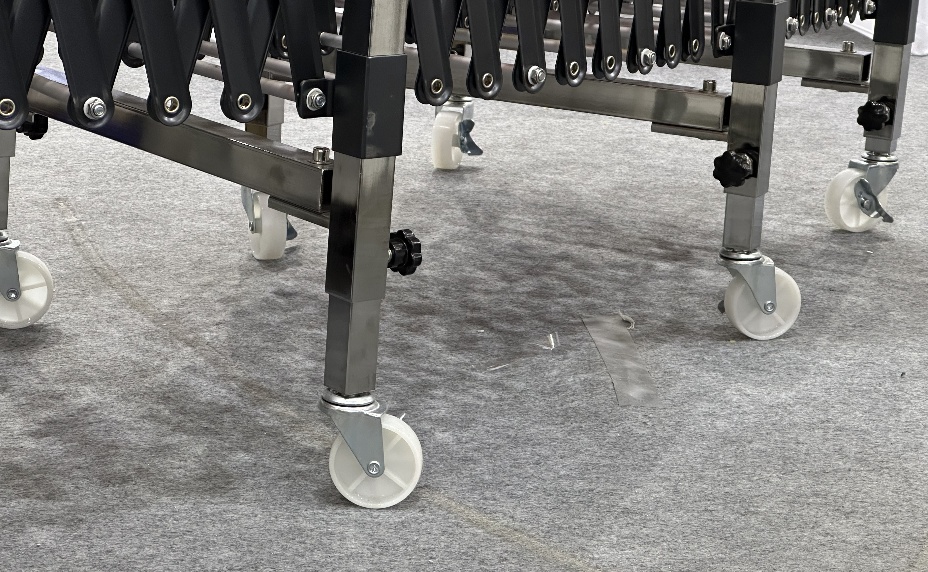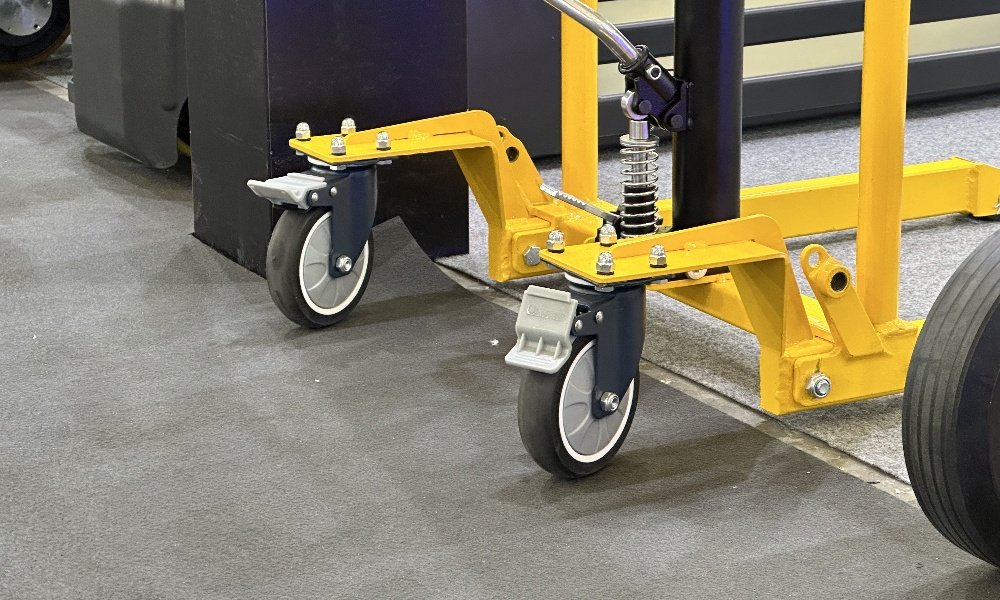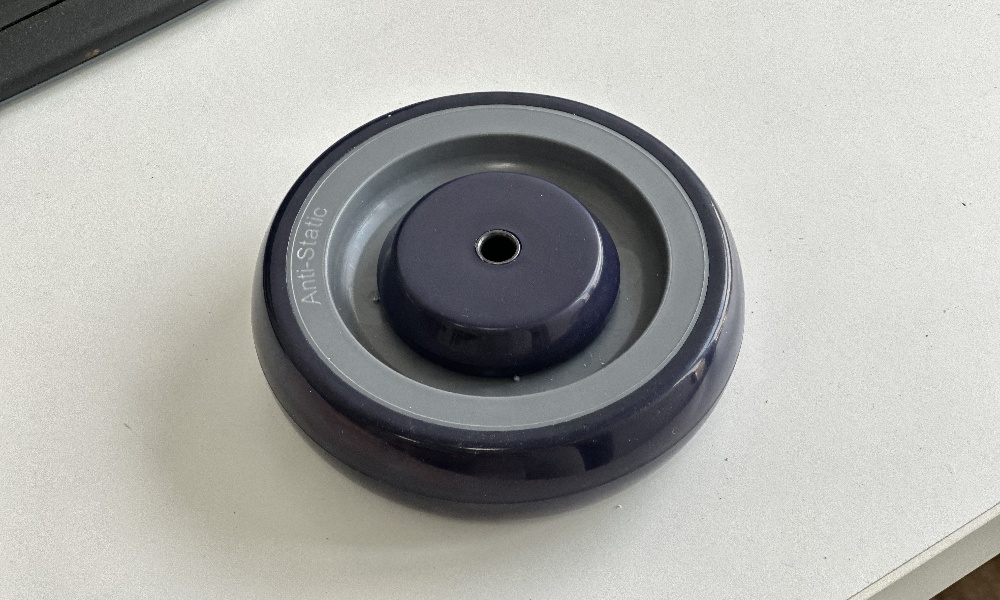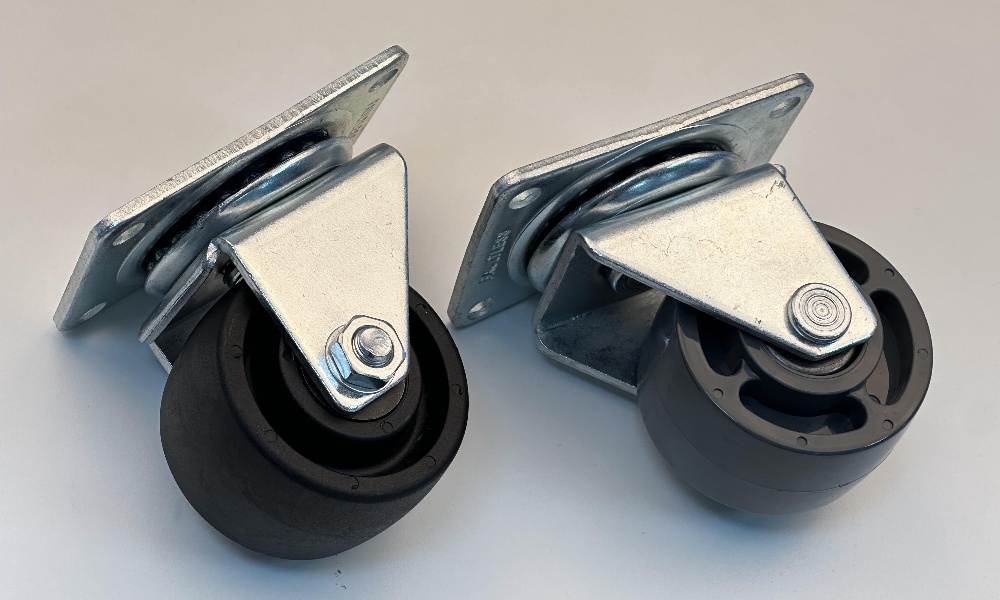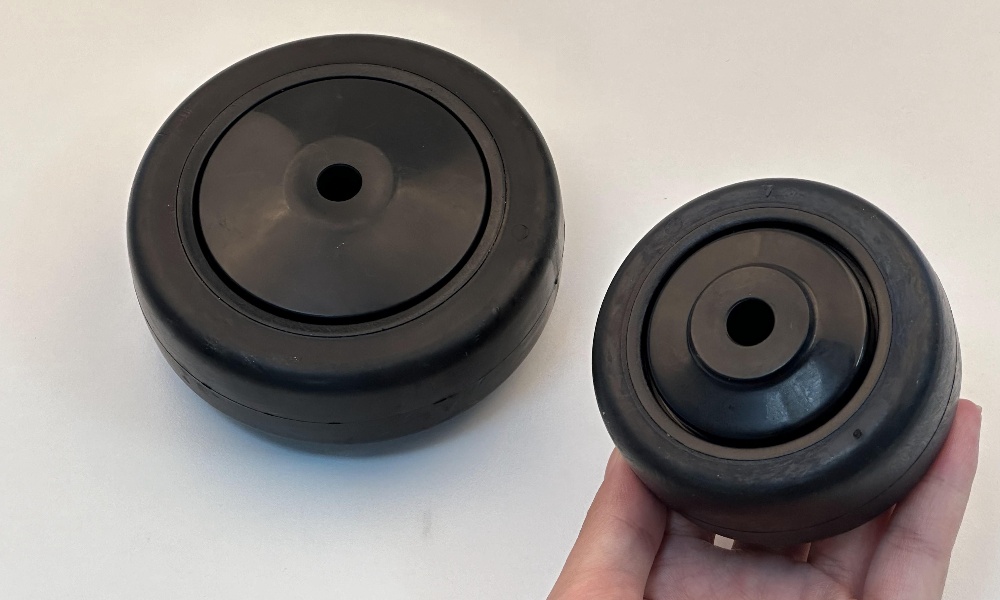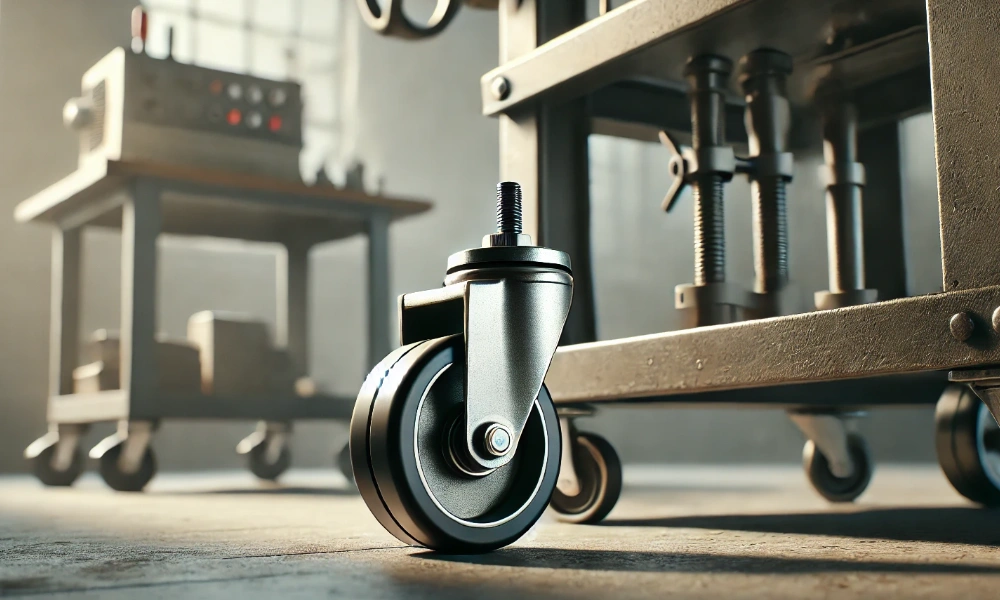What is a Cart Caster?
When people see a rolling cart glide effortlessly across a factory floor, a hospital corridor, or a retail store, they seldom pause to consider the humble component that makes such movement possible: the cart caster. Though small in appearance, this wheel system plays a critical role in mobility, load-bearing, and user safety. But what exactly is a cart caster, and why is it so important?
A cart caster is a wheel and mount assembly that allows carts to move smoothly and turn easily in any direction.
Understanding how cart casters work is essential to choosing the right caster for your application. From handling heavy loads in industrial settings to ensuring quiet movement in healthcare environments, cart casters are engineered with precision and purpose. There are various types, sizes, and materials used in manufacturing cart caster wheels to meet different needs—from standard swivel casters to heavy-duty or medical-grade options.
These components are more than just wheels; they determine how efficiently your cart will perform.
Let’s dive deeper and uncover everything you need to know about cart caster systems.

What is a caster on a cart?
A caster on a cart is a wheel mechanism mounted to the bottom of the cart, designed to enable mobility. Typically, a caster consists of the wheel itself, a yoke or bracket that holds the wheel, and a mounting plate or stem that connects to the cart frame. Cart caster wheels can swivel (rotating 360 degrees) or be fixed (rolling in a single direction).
Swivel casters provide superior maneuverability, allowing the cart to navigate tight spaces, while fixed casters offer greater stability on straight paths. Often, carts use a combination of both types for balanced performance. Cart casters come in many sizes and materials including polyurethane, rubber, and thermoplastic rubber, depending on the environment they are meant for. Industrial applications might require casters with higher load capacities and heat resistance, while office or hospital carts prioritize quiet and smooth operation.

Why is a castor wheel necessary for a cart?
Castor wheels are essential for carts because they make movement possible. Without them, even a lightweight cart would require significant effort to move. With properly functioning cart caster wheels, users can transport heavy items with minimal force, reducing fatigue and the risk of injury.
In addition to mobility, castor wheels offer directional control and flexibility. Swivel castors allow carts to turn in place, making them suitable for tight corners and congested areas. In contrast, rigid castors help maintain a straight path when required. The right combination enhances both safety and efficiency.
Another important benefit of castor wheels is load distribution. Good cart casters spread the cart’s weight evenly across all wheels, protecting floors from damage and improving the cart’s lifespan. Whether you are in a hospital, factory, warehouse, or retail environment, a properly selected castor wheel ensures operational efficiency and worker safety.


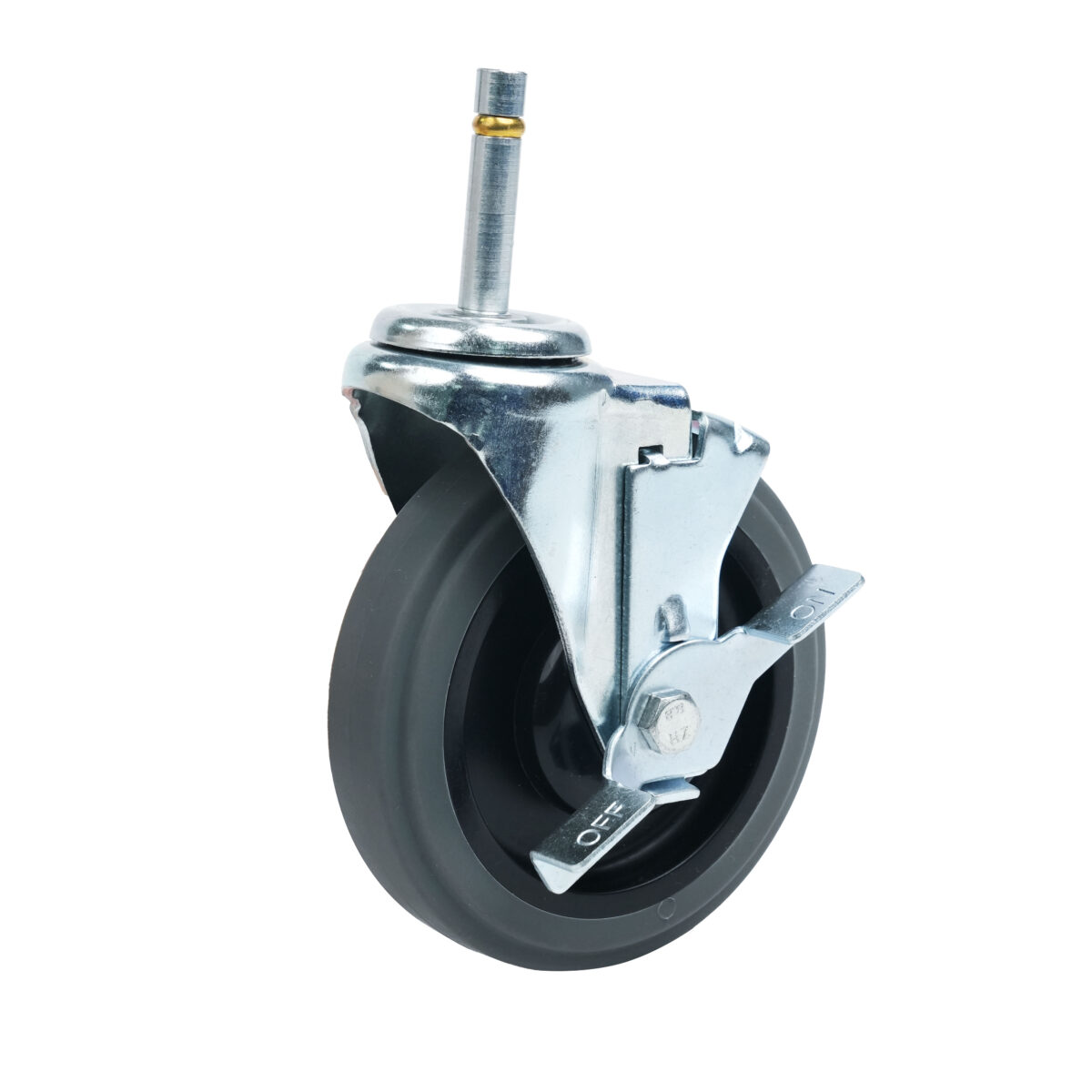
What happens if your caster is out of alignment?
When a caster is out of alignment, the entire functionality of the cart is compromised. Misaligned cart caster wheels can cause uneven rolling, increased resistance, and instability. This may lead to vibrations, noise, and steering difficulties, making it harder to control the cart—especially under load.
Over time, misaligned castors can damage flooring and cause excessive wear on the wheel material. This also raises the risk of accidents as carts may veer off unexpectedly or require additional effort to maneuver, putting strain on users.
Misalignment can occur due to wear and tear, poor installation, or uneven loading. Regular maintenance checks are essential to ensure all cart caster wheels remain in good working condition. Replacing damaged or worn-out wheels in a timely manner keeps your equipment operating smoothly and safely.
Why do shopping carts have negative casters?
Shopping carts often have “negative casters” for safety and control. A negative caster means the wheel’s pivot point is behind the vertical axis of the load-bearing point. This setup gives the cart better self-centering and stability, helping it return to a straight path when pushed.
Negative casters also make the cart feel more balanced and predictable, especially when maneuvering through crowded or uneven surfaces. This is particularly useful in retail environments where customers of all ages and abilities use carts. Without negative caster angles, carts could swerve uncontrollably or feel loose and unstable.
Additionally, negative caster angles reduce the risk of tipping during quick turns or when navigating slopes. They are an intentional design element that enhances both user experience and safety, making shopping more convenient and less frustrating.

Why choose our cart caster wheels?
At TARGET Casters, we specialize in designing and manufacturing premium cart caster wheels that combine durability, performance, and cost-efficiency. Whether you’re sourcing for retail, industrial, or medical applications, our castors are built to handle tough conditions without compromising on smooth mobility. With customizable options, fast delivery, and expert support, we make it easy to find the perfect solution for your carts.
Looking for reliable cart casters? Contact us today and get a quote—your carts deserve the best.
How long do castor wheels last?
The lifespan of cart castor wheels depends on several factors including material, usage conditions, and maintenance. On average, a high-quality castor wheel can last anywhere from 2 to 5 years, with some heavy-duty industrial wheels lasting even longer.
In high-wear environments such as warehouses or factories, where the cart caster may endure heavy loads, rough floors, or chemical exposure, wheels may wear out faster. In contrast, in controlled settings like hospitals or clean rooms, castors can last longer with minimal degradation.
Proper maintenance can significantly extend the life of your cart casters. This includes cleaning debris from the wheels, lubricating swivel bearings, and checking alignment regularly. It’s also important to select the right wheel material for your specific environment to avoid premature wear.
Replacing worn-out cart castor wheels promptly is essential not only for performance but also for safety. A small investment in upkeep can save significant costs in downtime or equipment replacement.
Cart casters are essential for mobility, safety, and operational efficiency—understanding them helps you choose the right solution.

